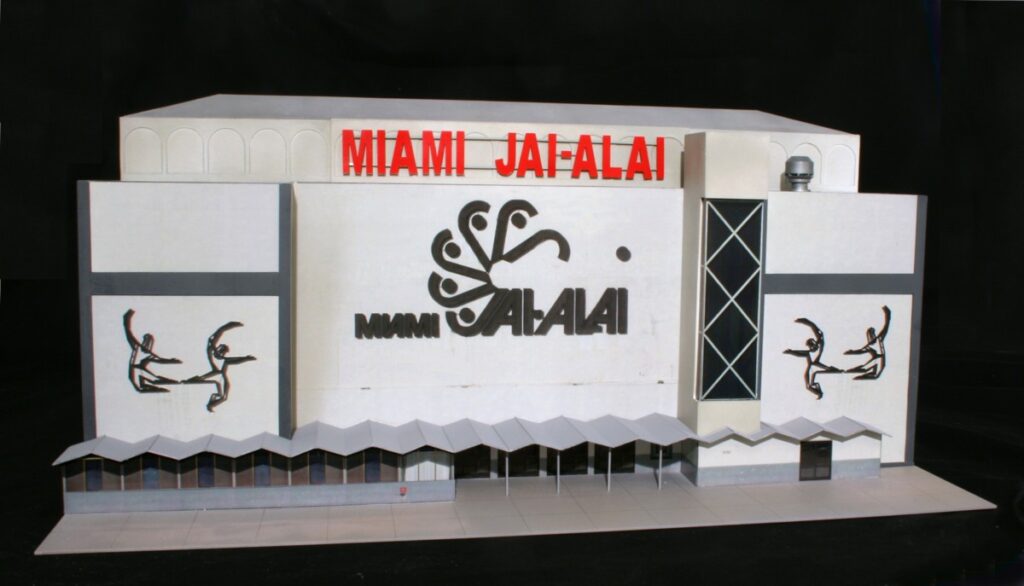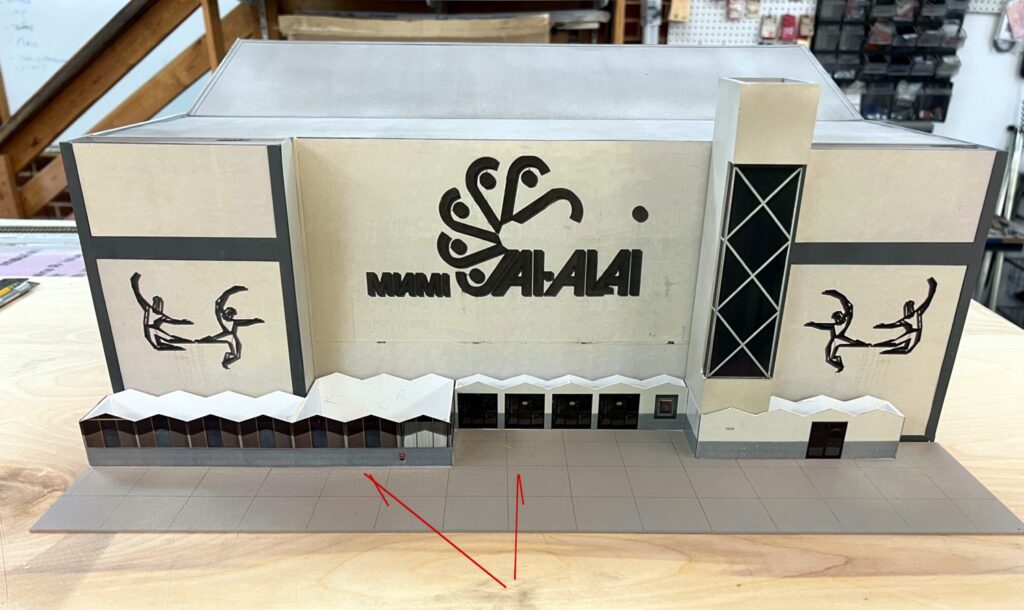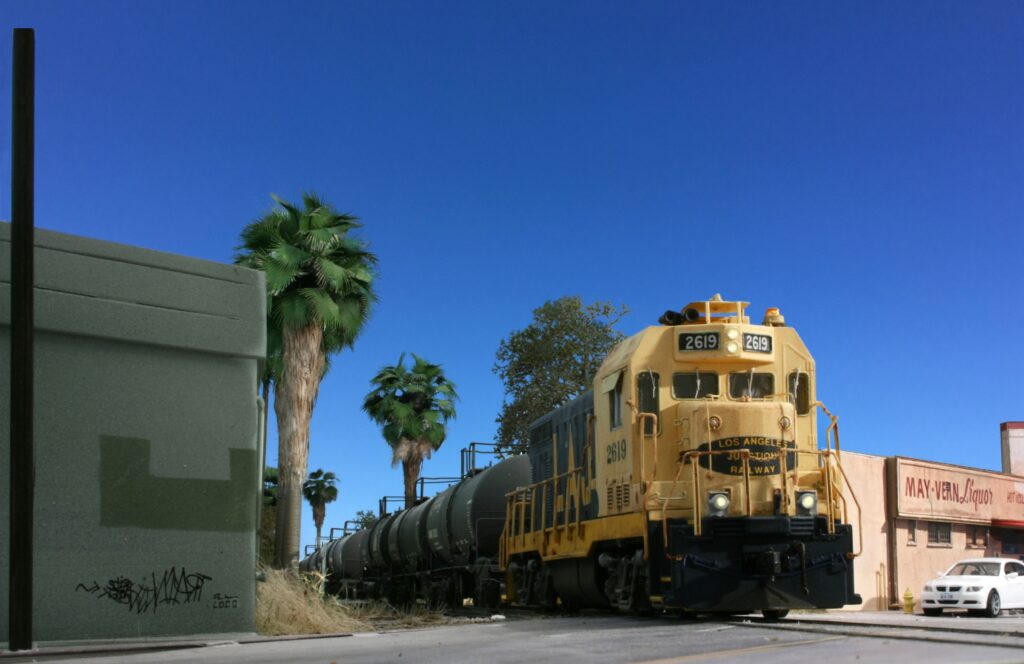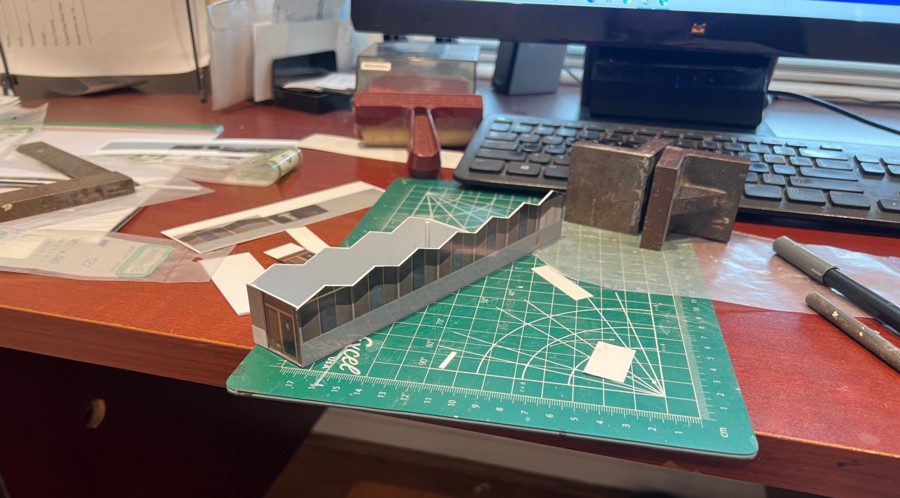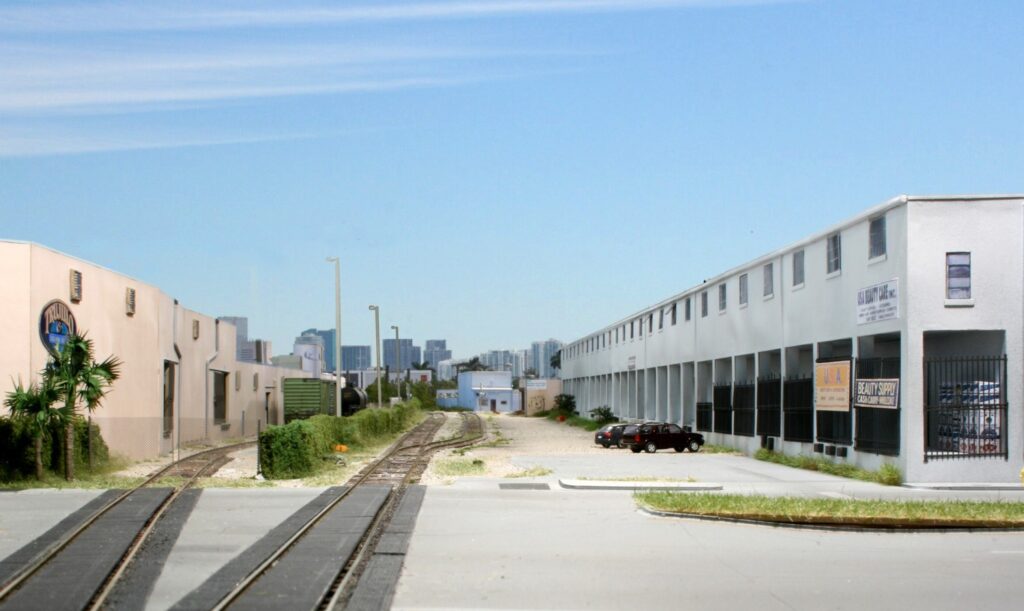
This shot was taken on the layout from 12th Avenue facing east towards downtown. Trujillo is on the left, the runaround track is in the distance. The Miami skyline is cropped in as I think it’s a better look than the basement door which is what you’d actually see if you were visiting the layout!
